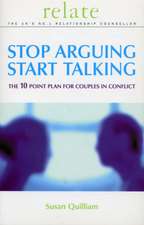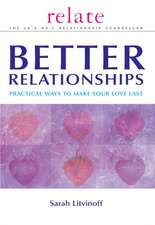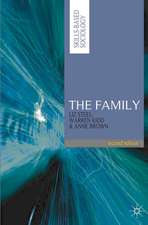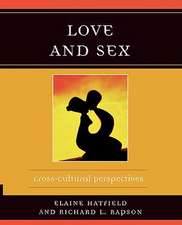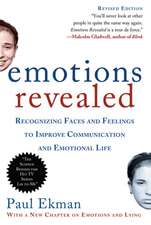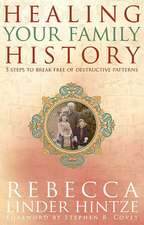Kids: How Biology and Culture Shape the Way We Raise Young Children
Autor Meredith F. Smallen Limba Engleză Paperback – 30 sep 2002
While Our Babies, Ourselves explored the physical and cultural preconceptions behind child-rearing and offered new clues to parenting practices that might be detrimental to a baby's best interest, Kids delves even deeper. Unraveling the deep-seated notions prescribed in most parenting books, Kids combines the latest scientific research on human evolution and biology with Small's own keen observations of various cultures for a lively, eye-opening view of early childhood in America. Small not only reveals how children in this age group socialize and absorb the rules that underlie the societies they live in; she also explains the extent to which parents enhance or hold back the emotional and psychological growth of their kids.
In her engaging style, Small blends memorable accounts from her own experiences raising a preschooler with fascinating findings from her pioneering cross-cultural research, which spanned the country as well as the globe. Covering myriad aspects of the miraculous process of human growth, Small breaks new ground on topics such as why childhood is the optimum time for acquiring language skills; how children absorb knowledge and learn to solve problems; how empathy, and morality in general, make their way into a child's psyche; and the ways in which gender impacts identity. Underlying each chapter is an illuminating discussion of how the roles parents assign children in America shape the self-esteem and self-image of a future generation.
Rich with vivid anecdotes and profound insight, Kids will cause readers to rethink their own parenting styles, along with every age-old assumption about how to raise a happy, healthy kid.
Preț: 120.91 lei
Nou
Puncte Express: 181
Preț estimativ în valută:
23.14€ • 24.41$ • 19.28£
23.14€ • 24.41$ • 19.28£
Carte disponibilă
Livrare economică 13-27 decembrie
Preluare comenzi: 021 569.72.76
Specificații
ISBN-13: 9780385496285
ISBN-10: 0385496281
Pagini: 304
Ilustrații: 15 HALFTONES (8 PP.)
Dimensiuni: 132 x 207 x 17 mm
Greutate: 0.29 kg
Editura: Anchor Books
ISBN-10: 0385496281
Pagini: 304
Ilustrații: 15 HALFTONES (8 PP.)
Dimensiuni: 132 x 207 x 17 mm
Greutate: 0.29 kg
Editura: Anchor Books
Notă biografică
Meredith F. Smaill is a professor of anthropology at Cornell University and the author of Our Babies, Ourselves; What's Love Got to Do with It?; and Female Choices. She writes frequently for Natural History Magazine, Discover, Scientific American, and is a commentator for National Public Radio's All Things Considered. She lives in Ithaca, New York.
Extras
Kids' World
I'm sitting on a tiny blue plastic chair with my knees wedged under a very short table. My hands rest on my lap to stop any fidgeting while I wait for the midmorning snack of crackers, juice, and vanilla yogurt. The room smells of crayons, white paste glue, and kids.
Since this book is all about kids, I wanted to start by being a kid myself, if only for a few hours. I hoped to recall what life was like before I had to make a living for myself. I wanted a starting point for looking at kids in my own culture, not as a parent but from their perspective: What does it feel like to be a child in Western culture? What is the day like? How do they see the world? What's new since I was young? And so I've come to the Community Preschool at St. John's in Summit, New Jersey, to feel once again what it means to be a child.
The Community Preschool at St. John's is designed for three- and four-year-olds from low- and moderate-income families. Director Susan Childs Merrick explains what makes a preschool different from day care: "We have a plan, and goals, and it's not just all unstructured play." The program is designed as a nurturing place where kids can express their creative skills and learn to be "confident, independent learners," as their school's brochure explains. This preschool offers early exposure to the structure of classroom, to the relationship between teachers and students, and how to get along in groups and to share. For many of the kids, Spanish is their primary language at home, and so preschool at St. John's is also designed to hone their English language ability before they enter kindergarten. And most of all, this place is just plain fun.
The hallway is lined with coat hooks placed three feet off the ground and a photograph of each kid hangs by bright yarn from the hooks, so that each child can easily identify where to hang his or her coat. There are two classrooms: one for the three-year-olds and one for the four-year-olds. You can tell which is which by the artwork on the walls—while handprints line the walls in the three-year-olds' room, more complex tissue paper wreaths, a skill of slightly older kids, adorn the classroom of the four-year-olds. Both classrooms are filled with supplies: Play-Doh and crayons, paints and paper, blocks of every shape and size. Everything is neatly stacked and labeled by the teachers, a lesson in order and place that distinguishes a classroom from a playroom.
I begin my morning with the four-year-olds. Clearly, they think it's pretty strange that an adult who is not a teacher is here to watch. At first, they glance at me out of the corners of their eyes as they file in, shifting their gazes quickly back to the teachers. Teachers, in this preschool context, are not just authority figures, they are clearly trusted confidantes. Some kids skirt around me, some come up and ask my name, and a few quietly ask their teacher who I am. When teacher Molly Little tells them it's okay, then it's okay.
After an hour, none of the kids really care about me anymore, because they are busy, so terribly busy, as only kids can be. The morning starts with an hour of free play. If I were to choose, I'd go for the table spread with pinecones and leaves and take up the giant magnifying glass and check out everything at high power. But these kids know more of what the room has to offer. Three girls in the back of the room don aprons and set a table with plates and silverware and plastic food. A few girls and boys play with the wooden trains, making sure to add in the requisite vrroom noises at the right moments.
Soon all the kids are organized to follow Mrs. Little's lesson plan. They can make holiday wrapping paper or listen to a story. Later everybody has a snack and some rest time. At the end of the morning, they will head for the playground, where they will run around before their parents come to pick them up.
In the other classroom, the three-year-olds sit at tables full of puzzles and blocks, or pull on a red plastic full-body smock and paint at an easel. Their teacher, Alexis Staats, conducts a running conversation among these kids, questioning and answering, attending to the needs of each one. Along with her aide, Dina, she chats about their artistic creations or about the upcoming party. She tries to engage a boy who is running around the room. She seemingly has endless patience, as well as the ability to hone in exclusively on a single child a few moments before turning to another, like a good mother with brood of children who happen to all be the same age. I have a snack with the kids in this room too, which even the three-year-olds know is cheating since I already had one across the hall.
After a while, I settle down and take a deeper look at my surroundings, how it looks and how it feels. To my surprise, the whole experience begins to feel eerily familiar, as if cutting out a paper figure with blunt scissors or lying down on the floor with a blanket for a morning rest were part of my life only weeks ago. I am comfortable with the sense of a plan, the expectation that we would do this or that at such and such a time, that someone would lead and I would follow. More interesting, I find familiarity in the interactions among the kids: The interpersonal machinations it takes to socialize at four, I have to admit, don't seem all that different than socializing at forty. Three little girls sitting at the table painting and chatting could have been me and two friends at a bar—they too were gossiping about the behavior of another friend. Two younger kids negotiating a set of blocks remind me of adults sharing an office space or working on a memo together. I feel at home, even if the furniture doesn't fit.
From the Hardcover edition.
I'm sitting on a tiny blue plastic chair with my knees wedged under a very short table. My hands rest on my lap to stop any fidgeting while I wait for the midmorning snack of crackers, juice, and vanilla yogurt. The room smells of crayons, white paste glue, and kids.
Since this book is all about kids, I wanted to start by being a kid myself, if only for a few hours. I hoped to recall what life was like before I had to make a living for myself. I wanted a starting point for looking at kids in my own culture, not as a parent but from their perspective: What does it feel like to be a child in Western culture? What is the day like? How do they see the world? What's new since I was young? And so I've come to the Community Preschool at St. John's in Summit, New Jersey, to feel once again what it means to be a child.
The Community Preschool at St. John's is designed for three- and four-year-olds from low- and moderate-income families. Director Susan Childs Merrick explains what makes a preschool different from day care: "We have a plan, and goals, and it's not just all unstructured play." The program is designed as a nurturing place where kids can express their creative skills and learn to be "confident, independent learners," as their school's brochure explains. This preschool offers early exposure to the structure of classroom, to the relationship between teachers and students, and how to get along in groups and to share. For many of the kids, Spanish is their primary language at home, and so preschool at St. John's is also designed to hone their English language ability before they enter kindergarten. And most of all, this place is just plain fun.
The hallway is lined with coat hooks placed three feet off the ground and a photograph of each kid hangs by bright yarn from the hooks, so that each child can easily identify where to hang his or her coat. There are two classrooms: one for the three-year-olds and one for the four-year-olds. You can tell which is which by the artwork on the walls—while handprints line the walls in the three-year-olds' room, more complex tissue paper wreaths, a skill of slightly older kids, adorn the classroom of the four-year-olds. Both classrooms are filled with supplies: Play-Doh and crayons, paints and paper, blocks of every shape and size. Everything is neatly stacked and labeled by the teachers, a lesson in order and place that distinguishes a classroom from a playroom.
I begin my morning with the four-year-olds. Clearly, they think it's pretty strange that an adult who is not a teacher is here to watch. At first, they glance at me out of the corners of their eyes as they file in, shifting their gazes quickly back to the teachers. Teachers, in this preschool context, are not just authority figures, they are clearly trusted confidantes. Some kids skirt around me, some come up and ask my name, and a few quietly ask their teacher who I am. When teacher Molly Little tells them it's okay, then it's okay.
After an hour, none of the kids really care about me anymore, because they are busy, so terribly busy, as only kids can be. The morning starts with an hour of free play. If I were to choose, I'd go for the table spread with pinecones and leaves and take up the giant magnifying glass and check out everything at high power. But these kids know more of what the room has to offer. Three girls in the back of the room don aprons and set a table with plates and silverware and plastic food. A few girls and boys play with the wooden trains, making sure to add in the requisite vrroom noises at the right moments.
Soon all the kids are organized to follow Mrs. Little's lesson plan. They can make holiday wrapping paper or listen to a story. Later everybody has a snack and some rest time. At the end of the morning, they will head for the playground, where they will run around before their parents come to pick them up.
In the other classroom, the three-year-olds sit at tables full of puzzles and blocks, or pull on a red plastic full-body smock and paint at an easel. Their teacher, Alexis Staats, conducts a running conversation among these kids, questioning and answering, attending to the needs of each one. Along with her aide, Dina, she chats about their artistic creations or about the upcoming party. She tries to engage a boy who is running around the room. She seemingly has endless patience, as well as the ability to hone in exclusively on a single child a few moments before turning to another, like a good mother with brood of children who happen to all be the same age. I have a snack with the kids in this room too, which even the three-year-olds know is cheating since I already had one across the hall.
After a while, I settle down and take a deeper look at my surroundings, how it looks and how it feels. To my surprise, the whole experience begins to feel eerily familiar, as if cutting out a paper figure with blunt scissors or lying down on the floor with a blanket for a morning rest were part of my life only weeks ago. I am comfortable with the sense of a plan, the expectation that we would do this or that at such and such a time, that someone would lead and I would follow. More interesting, I find familiarity in the interactions among the kids: The interpersonal machinations it takes to socialize at four, I have to admit, don't seem all that different than socializing at forty. Three little girls sitting at the table painting and chatting could have been me and two friends at a bar—they too were gossiping about the behavior of another friend. Two younger kids negotiating a set of blocks remind me of adults sharing an office space or working on a memo together. I feel at home, even if the furniture doesn't fit.
From the Hardcover edition.
Recenzii
“A revealing perspective on how and why we raise children as we do.” — Booklist
"Her concise, readable treatment of cross-cultural differences in child-rearing will interest everyone from high school students to grandparents, with or without children." --Library Journal
“Admirably ambitious.” — Publishers Weekly
"Her concise, readable treatment of cross-cultural differences in child-rearing will interest everyone from high school students to grandparents, with or without children." --Library Journal
“Admirably ambitious.” — Publishers Weekly
Descriere
In this follow up to her acclaimed "Our Babies, Ourselves, " Small focuses on the preschool years as she explores what other cultures have to say about the "right" way to raise children.


